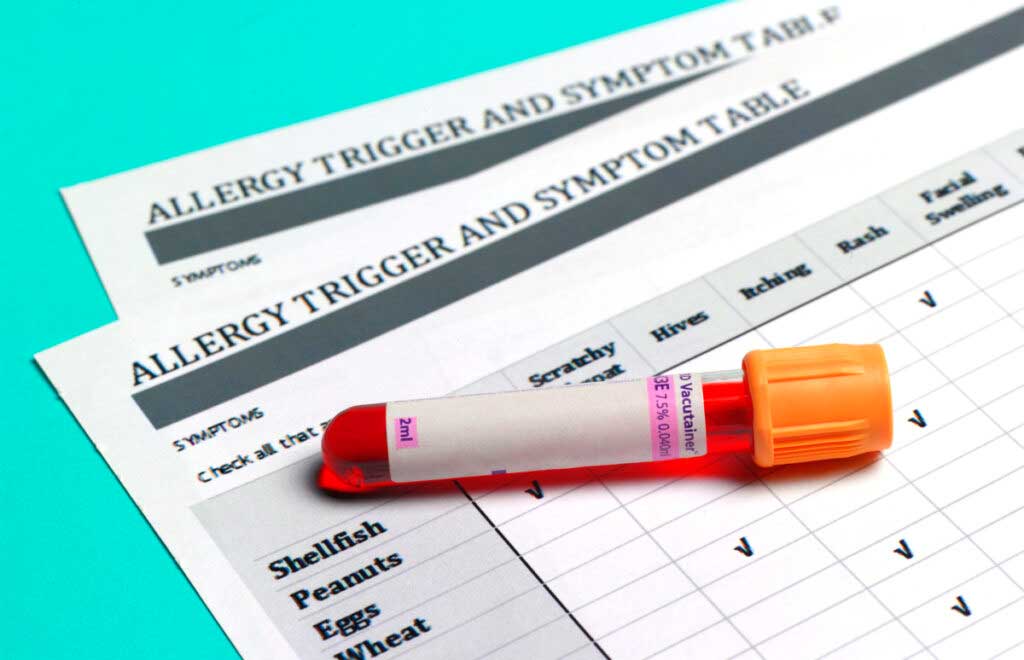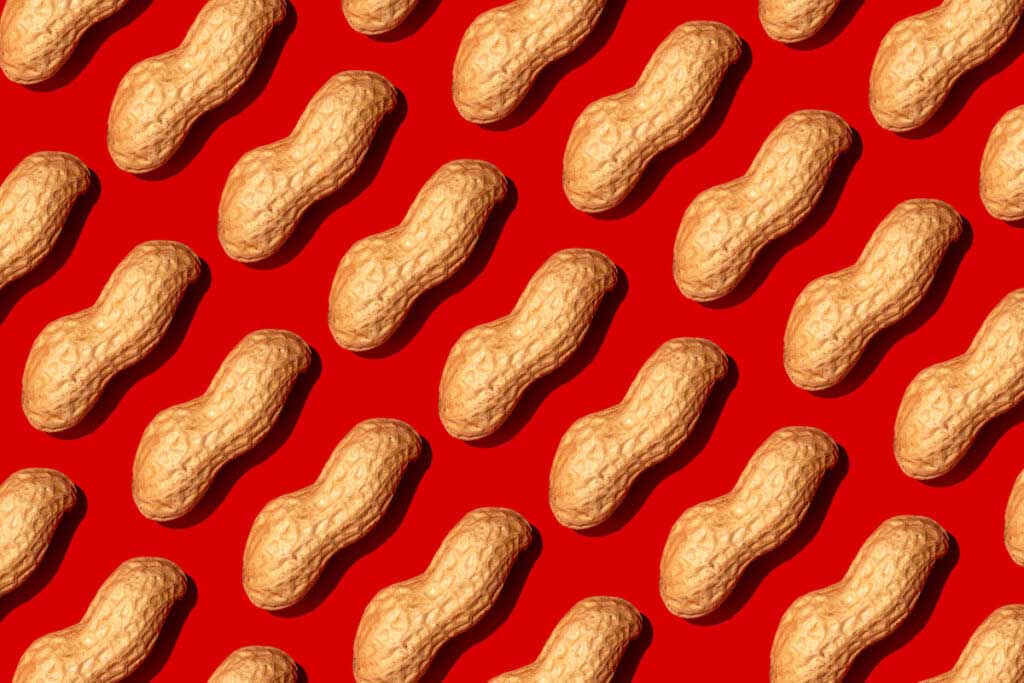As a researcher, one’s greatest hope is often that your research influences policy and changes people’s lives for the better. Most of us do not get that! My most highly cited academic paper is “Unobservable Selection and Coefficient Stability: Theory and Evidence.” I like it! But even I admit it has changed few lives.
Dr. Gideon Lack is someone who I think can confidently say that work he’s done has changed, and saved, lives. His work — in particular, a seminal paper from 2015 in the New England Journal of Medicine — is the reason for a radical change in medical advice about allergen introduction. Before this paper, parents were encouraged to hold off on introducing allergens like peanuts before the age of 1. The paper showed that this advice was not just unhelpful, but actively wrong. Introducing allergens early reduces the risk of allergy, rather than increasing it, and by a lot.
I’ve been a fan of this work for years, and getting a chance to talk to the man himself — about both this research and what he’s been doing since — was an enormous treat. We talk about the original paper, where he got the idea (I had a guess; it was mostly wrong), and why he’s partnering with a company called Mission MightyMe to make allergen introduction easier on parents. Enjoy!
Full transcript
This transcript was automatically generated and may contain small errors.
As we’ll talk about today, randomized trial evidence conveniently occurring between my two kids actually showed that you need to give kids allergens early to prevent allergies. When I wrote Cribsheet, my book about early parenting, people often asked me in interviews, “What is the one piece of advice you would give to parents?” The one piece of advice that I always say is, “Introduce allergens early.” It’s one of the few things where we have concrete and actionable evidence about the, “Right thing to do.” And one really big reason for this is today’s guest, Dr. Gideon Lack, who actually ran the trial that evaluated early introduction of peanuts. I’ve wanted to talk to Dr. Lack since I read this paper and I’m delighted to do so today. We talk about the trial, but also about the science of allergies and we get into some real practical advice about what to do with peanuts and your baby. After the break, Dr. Gideon Lack.
Welcome, Gideon. Thank you so much for joining me. I’d love it if you could just introduce yourself, tell us where you are today and what your job is.
So the result of this, and we’re going to talk about the shifts in recommendations and the smaller shifts perhaps in what people are actually doing and how parents should operationalize this. But I actually want to start by asking you where this idea came from because when I wrote Cribsheet and I wrote about this study, I had a whole story about where you had come up with this idea. And I’m not going to tell you what it is because I’m sure it’s not right. But can you tell me how you came up with this idea?
And the most interesting thing to me at the time, and I remember asking my teachers about this was that if you fed a young mice pup peanut or egg or milk protein by gavage, very early on in life in high amounts, it was almost impossible to artificially cause the development of food allergy in that mouse. And in fact, that is a long well-known phenomenon called oral tolerance induction that people have known about going back to the beginning of the 20th century actually, H.G. Wells, the author who actually wrote about this using animal models, he was a scientist. And we’ve known about this for decades and decades. And simultaneously to all of this, we were saying, “Well, let’s avoid allergenic foods in babies to prevent the development of food allergies.” Where in fact we believed it should have been the opposite.
And we had this idea for a long period of time that we could wrap up babies in an immunological cocoon, avoid exposure to peanut proteins and to other food proteins and let the baby’s immune system mature to 1, 2, 3 years of age. The American Academy Pediatric guidelines used to be avoid peanuts till three years of age. That was changed in 2008. And this idea was that by protecting that baby during its early formation, the formation development of its immune system, you would be protecting against peanut allergy. And of course, that’s not the case. And personally I believe that’s a reason for the increase in food allergies.
And indeed we found that the rate in the UK children was just over 2% and it was well below 0.2% in the Israeli babies. There was essentially a tenfold higher rate in the UK. We found the UK babies using questionnaires were not eating peanuts at all, median consumption was zero grams of peanut per week. Whereas in Israel, on average, and the majority of babies actually were eating two grams plus of peanut protein per week, which is about two teaspoons of peanut butter a week. But that was observational data and that didn’t prove anything.
And this person isn’t expressing as much fear, although there’s some anxiety, but people also tell me just, “I’m afraid to do this. I want to wait longer because I’m afraid.” Even when they know the recommendation, let alone not knowing. So I think the first thing I want to talk about is what exactly do you do in the trial? It’s not just you gave them one peanut at six months, it’s a much deeper thing than that. So can we just for people tell them, what is the treatment that is delivering the results in the LEAP study?
And we actually combined our LEAP data with another study, the EAT study, very similar designed to LEAP, but that was a low risk population of 1,300 babies. And there we recommend introducing peanuts between three and six months of age. But the bottom line was when we did the modeling and even looking at the raw data without modeling, it became eminently clear that after six, seven months of age, especially in babies with eczema, it was getting too late. And if you had brought a baby into the study at 10 months of age, they already had about a 40% chance of having peanut allergy and having to be excluded. So especially if you’re high risk, there isn’t much wiggle room, you’ve got to intervene really early.
In fact, against my earlier beliefs, I decided to become involved in this sort of venture with some colleagues and we founded a company called Mission MightyMe. And in fact, although there isn’t evidence for other nuts, there is now moderate to high level evidence that multi allergen introduction will prevent multiple food allergies. And we’ve created dissolvable puffs that babies can, as early as four months, start having. I mean, that is one way of doing it. It’s proven to be highly successful in Israel and that’s why we chose that. And by the way, it should be said, Israeli babies are not protected against food allergies in general. They have the same rates of milk and egg and other food allergies as in the UK. So this really seems to work well at a population level in Israel and we went down the puff route, but the other ways it can be done as well, pouches, as I said, I’m not keen on tablets or powders.
And that’s the second part of the dual allergen exposure hypothesis. You can be exposed to foods in two ways, one by eating it or through the skin. If you’ve got eczema all over your cheeks, you’ve got dry skin over your cheeks as an infant and foods get on that skin, your parent has eaten a peanut butter sandwich or had an egg omelet and touches your face, kisses your face. The baby is exposed to foods through their skin from the parent’s hands, and those food molecules can penetrate the skin and be taken up by what are called antigen presenting cells under the skin. And we know already from mouse models previously that if you are exposed to proteins through the skin, especially an inflamed skin, that leads to an allergic type response. And we believe that, we don’t have strong evidence, but we have good reason to believe that from an evolutionary perspective, that’s because helminthic parasites would burrow their way through the skin-
The same has been shown very interestingly for people who like to wear jewelry and can’t afford the very expensive jewelry, nickel is a very common ingredient and in many people that causes a form of eczema called contact dermatitis. And we know, especially there’ve been studies showing that young girls and teenage girls who’d had their ears pierced, had a higher chance of developing allergies to nickel. But if they had orthodontic braces in the mouth applied several years before that contained nickel, they seemed to be almost completely protected against developing nickel allergy. Which to me is a beautiful non-allergic example of the dual allergen exposure hypothesis.
There are some very interesting, new products today that are used, the monoclonal antibodies, that are used to treat eczema now and asthma that target the inflammatory pathway in the skin and the immune system that lead to eczema, asthma and food allergies and really very successfully will switch off eczema. And one of the questions, these molecules seem to be very safe, if you gave them to high risk babies very early on, could you prevent peanut allergy by preventing the development of eczema? So that’s a pathway that remains. And actually it’s a pathway I like because I spoke to you about the food we’ve developed and we have been able to produce foods that contain five allergens, five nuts including peanuts, but you still have a lot of foods to consider, 16 potential allergens and to eat all of these insufficient amounts early enough in life to prevent all these food allergies may be a challenge. And one way forward, which would be really wonderful, would be just to prevent the development of eczema, which is-
But when you put into a regression analysis, where you look at all the variables and you looked at family consumption, family consumption, trumped all and the association between maternal consumption and the development of peanut allergy, that association disappeared. And we believe that simply a mother eating a lot of peanut while breastfeeding simply is a marker of the rest of the family eating a lot of peanut, there happens to be a lot of peanut butter in that household, the family’s eating it and the baby has a higher risk. Again, this is where it’s so difficult when you’ve got multiple possible causes making spurious or wrong correlations.
[Violin music]
Community Guidelines

















Log in
Hi Emily – I listened to this podcast when my daughter was very young and it inspired me to do early allergen introduction. She unfortunately developed a walnut allergy but we are continuing on with introduction and maintenance to all other allergens. Is there research by Dr Lack or others about how much continued exposure we need to do for other nuts? For example, 1/4 tsp 1x/week, etc.? Thank you!